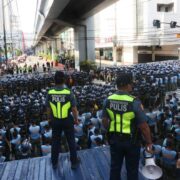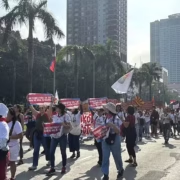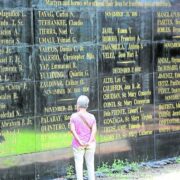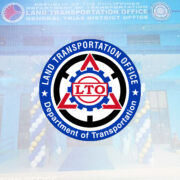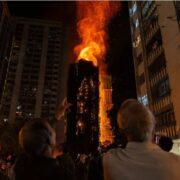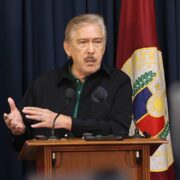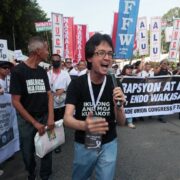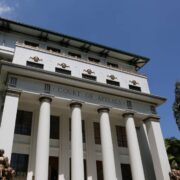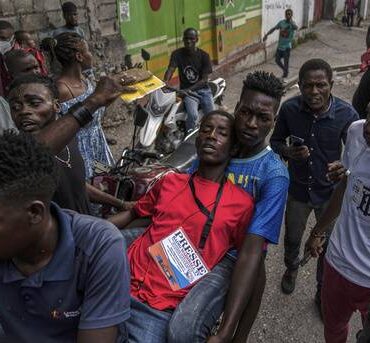Issues of governance

This week, I have been browsing periodicals from 1961, the year of my birth, to see how much the Philippines has changed since. Sad to say that aside from technological advances like the internet, smartphones, electric cars, and the proliferation of motorcycle “kamote drivers” on the road, much remains the same. I also browsed entries in the diaries of Ferdinand E. Marcos Sr. for the months March and April 1972, to get a sense of the country at the dawn of martial law. March was relatively uneventful, except for the late President’s keen interest to look into the activities of faith healer Tony Agpaoa that was drawing health tourists to Baguio. He also asked the Board of Pardons and Parole to recommend a two-month reprieve for three convicted kidnappers who raped actress Maggie dela Riva. Acting favorably on the recommendation he solicited, the rapists set to burn in the electric chair on March 17, 1972, were cruelly made to wait till May 17 for another date to meet their Maker.
Our current problems with the Ninoy Aquino International Airport (Naia) trace their roots to the old Manila International Airport that was burned down in January 1972. On March 6, 1972, Marcos wrote:
“We have decided to spend P22.5 million on the rehabilitation of the old burned terminal, P5.5 million for a domestic terminal at the old Balabag terminal near the Air Force. The trading center for duty-free goods shall be in the hotel premises of the Nayong Pilipino. Then a new international airport shall be bid out, including the coastal road to it at the Bulacan foreshore. This may take 10 years. Then I met the financing people on the public works cash flow. Very deficient.”
Could that proposed airport, finished by the early 1980s, spared us the current issues with the Naia? Then as now, we had issues with: irrigation and schoolhouse construction, highways and feeder roads, ports, airports, flood control, etc. Although he estimated a budget of P100 million for infrastructure, he only released an initial P35 million noting that: “We need P100 million annually for irrigation, P60 million annually for the construction of schoolhouses, a special fund for airports.” These figures are not obsolete, they have become relative in the wake of the scrutiny of the Department of Education’s utilization of its budget under Sara Duterte.
Tourism was a priority and one of the proposals was the development of Fuga Island into a resort. He went over proposals from “a group of American businessmen who have been developing vacation resorts like the Bahamas and New Hebrides. They intend to spend $150 million, keeping Barit and Mabag as private preserves. But a city has to be created and the charter has to authorize the city board to license games of chance—gambling. And an international airport has to be established or authorized.” This was not implemented and today our popular crowd drawers are: Boracay, Palawan, and Siargao, the continuing development of which have to be balanced with preservation of the environment.
National security was on top of the president’s agenda at the time. He played the United States for aid and surplus by sending former first lady Imelda Marcos as his personal envoy to Moscow in March 1972. On March 15, 1972, he wrote:
“It is my feeling that the Nationalist China will threaten to give naval bases to Russia as a matter of self-preservation if the US rescinds the mutual defense pact. This is a matter for survival of Taiwan. Otherwise, it becomes a province of Red China and a threat to the Philippines as well as to the other Southeast Asian countries.
“So the visit of Imelda to Moscow could be interpreted as some kind of a similar veiled threat on the part of the Philippines. But there was no such intention on my part. However, since it is there and it redounds to the national interest I have let this idea percolate. The US will probably now agree to help us strengthen our defenses.”
Studying the war in Vietnam and the issue of Taiwan, Marcos noted prophetically: “Right now the Red Chinese are not capable of mounting an amphibious assault on Taiwan or the Philippines. But in a period of anywhere from 10 to 20 years. Everybody seems to be working for time.”
Those who expect juicy tidbits in the Marcos diaries will be disappointed that much of it covers governance issues and how he managed them. Aside from settling political differences in the executive and legislative branches of government, he had to deal with food production to stabilize the rising prices of consumer items. Then there was the communist insurgency in Luzon and seeds of secession in Mindanao. There were, just as now, the issues of a deficit in the national budget and where to find them. “P2 billion needed every year for 100,000 houses at P20,000 per unit, which we do not have.” Imagine a house that costs only P20,000 then?
When published, the Marcos diaries should be read by anyone who aspires to live in Malacañang, if only to appreciate that running the country is not as easy as winning or buying an election.
—————-
Comments are welcome at aocampo@ateneo.edu
Ambeth is a Public Historian whose research covers 19th century Philippines: its art, culture, and the people who figure in the birth of the nation. Professor and former Chair, Department of History, Ateneo de Manila University, he writes a widely-read editorial page column for the Philippine Daily Inquirer, and has published over 30 books—the most recent being: Martial Law: Looking Back 15 (Anvil, 2021) and Yaman: History and Heritage in Philippine Money (Bangko Sentral ng Pilipinas, 2021).


